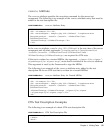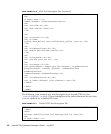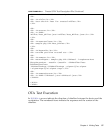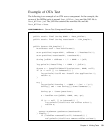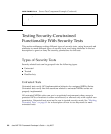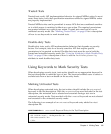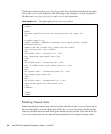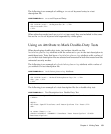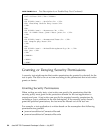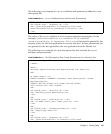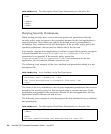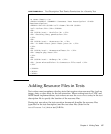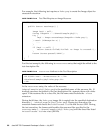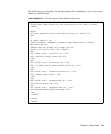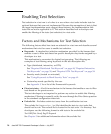
Chapter 4 Writing Tests 63
The following is an example of adding a trusted keyword entry to a test
description file.
When other keywords (such as positive) are used, they are included in the same
line as the trusted keyword and separated by white space.
Using an Attribute to Mark Double-Duty Tests
When developing double-duty tests, test writers should use the
DoubleDutySecurity attribute with the value set to yes in the test description to
mark these tests. Tests that have a DoubleDutySecurity attribute with a value of
yes in their test description file are selected and executed in both the trusted and the
untrusted security modes.
The following is an example of a DoubleDutySecurity attribute with a value of
yes added to a test description file.
The following is an example of a test description file for a double-duty test.
CODE EXAMPLE 4-15 trusted Keyword Entry
<TR>
<TD SCOPE="row"> <B>keywords</B> </TD>
<TD>trusted</TD>
</TR>
CODE EXAMPLE 4-16 DoubleDutySecurity Attribute
<TR>
<TD SCOPE="row"> <B>DoubleDutySecurity</B> </TD>
<TD> yes </TD>
</TR>
CODE EXAMPLE 4-17 Test Description for a Double Duty Test
<TITLE>Test Specifications and Descriptions for Test</TITLE>
</HEAD>
<BODY>
<H1>Test Specifications and Descriptions for Test</H1>
<HR>
<a name="Test"></a>
<TABLE BORDER=1 SUMMARY="JavaTest Test Description" CLASS=
TestDescription>



